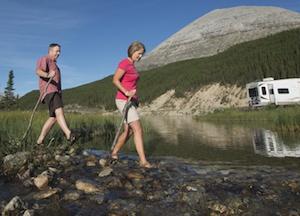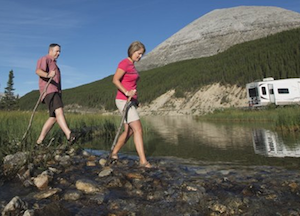
Long-haul “rubber road travellers” still drive business in northern B.C., but operators see growth in business- and sports-related tourism.
Tourism operators and associations predict brisk business in northern B.C. this summer, but labour shortages still plague the sector
Higher visitor numbers and a sharp spike in inquiries at Prince George’s information centres have Tourism Prince George CEO Aidan Kelly predicting a strong summer season this year, but he’s more enthusiastic about long-term growth in the tourism and hospitality sector.
The upswing in the natural resources sector has reinforced Prince George’s profile as a hub for business tourism, but higher interest in outdoor recreation from long-haul “rubber tire travellers” (tourists that come on two- to three-week trips) is also helping the important leisure travel market, according to Kelly. He says that higher traffic from leisure and business travellers has led to a compound 18 per cent growth in hotel revenues.
“We see travellers that are coming for a very specific reason, like hunting or fishing,” says Anthony Everett, CEO of Northern B.C Tourism.
Kelly says that since 2008 Prince George has had a number years that were quite flat. A long-haul destination, Prince George was less affected by the sharp drop in U.S. visitors in 2009 that hit the near-border hospitality industry hard. Prince George is more reliant on long-haul travellers who plan trips far in advance.
But despite the sunny short-term forecast, northern B.C.’s hospitality industry still faces two key challenges: labour shortages and a lack of awareness in major markets.
There is some good news: Of the 100,000 tourism sector job openings that Go2 Tourism HR Society (the province-wide organization that coordinates B.C.’s tourism sector labour market strategy) projects by 2016, a high proportion will be in northern B.C. That said, employers are already struggling to fill those positions.
Remote on-site camps with one-week-in / one-week-out rotations put pressure on the hospitality sector by promising high wages and paid-travel to potential employees. “These camps will needs cooks, chefs and quality managers,” says Arlene Keis, CEO of Go2, noting that one of the bigest labour-deman problems in the province is in finding and training cooks in teh Peace River region.
Labour shortages in Prince George and the Peace River region have always been driven by competition with nearby Alberta’s high wages and urban perks—in particular, Edmonton. But according to Keis, both the tourism and hospitality industries’ high reliance on the dwindling number of 18 to 24 year olds in rural regions will become particularly acute by 2016. Retiring baby boomers will take a toll on professional occupations including air pilots, managers and business owners. Go2 outlined successorship planning as a key future problem in its 2011 labour market study.
The appeal of northern B.C.’s brand also presents a problem. In a 2012 survey of northern B.C.’s major markets, only 39 per cent of respondents were familiar with Prince George, and 23 per cent with the Alaska Highway. Only 36 per cent of the respondents had a favourable impression of northern B.C. as a vacation destination, behind every other region in B.C.
Despite the crunch on some employers, Everett believes that there’s opportunity for the different sectors in northern B.C.’s economy to work together. “We’re making sure that everyone understands: tourism provides that foundation for all business that’s happening in northern B.C.






